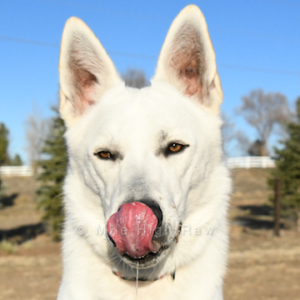Changing Your Dog’s Diet
Transitioning your dog’s food to a raw diet that is complete and balanced is easy and usually done in one of the three ways listed below. First, leave behind your air-dried, canned dog food, dry dog food, kibble, or processed pet food. Then start your dog eating fresh whole raw foods for better nutrition. Finally, visit our online shop and place an order.
The first belief is to switch over 100% right away. Think of it in human terms. Would it affect you to switch from eating fast food/processed food to a well-balanced diet? Most people immediately see the benefits of a balanced, fresh, healthy new diet. Therefore, this is an excellent option if the dog is healthy and young. Also, some people prefer fasting for 24 hours when transitioning to raw dog food.
The second belief is to switch over time. Changing over time is recommended if the dog has been eating kibble for a long time, has health issues, or is older. A reasonable timeframe for transitioning is two weeks to a month. One would slowly increase the raw food diet at 1/8 or a ¼ every 4 to 5 days while decreasing kibble at the same rate.
The Third belief is to start with green tripe. Colorado Top Dog prefers this method and recommends this as the least stressful and worry-free transition method. Furthermore, this works best for dogs with digestive disorders, sensitive stomachs, or older dogs. Start Denver green tripe at approximately 1-1.5% of the dog’s body weight. Within a few weeks, begin the transition to raw dog food. Preferably Albright’s Raw Dog Food, Aunt Jeni’s Home Made, or Steve’s Real Food.
Dogs with digestive disorders or sensitive stomachs may benefit from digestive enzymes, prebiotics, or probiotics. Consult your veterinarian concerning the diet change.
Transition to Raw Food Tips
Other tips on the change:
- Adding small amounts of canned pumpkin or sweet potato can help during the transition. These help with both constipation and diarrhea.
- Determine the feeding amount using our raw food calculator.
- Eliminate treats during the transition to raw dog food.
- Provide plenty of water.
- The smell and texture of the food make some transitions slower.
Changes in stool:
Firmer raw dog food stools will make your dog strain more. These firmer stools help naturally express your dog’s anal glands. As a result, there’s a reduction in the chance of infection.
Consistency may be variable. If the dog exhibits consistent and prolonged diarrhea, consult your vet. Green tripe and prebiotics/probiotics help during the adjustment period.
Film on the stool. The film is typical during the transition as your dog detoxifies. Other everyday things are runny eyes and noses. Most detoxification takes 2-6 weeks. But, again, dependent on age and what your dog has been exposed to in the past (i.e., drugs, long-term kibble feeding, or steroids).
If you believe your dog has prolonged issues, don’t hesitate to contact your veterinarian concerning the diet change.

